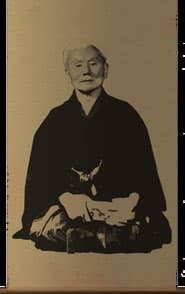


Karate
Karate is a Japanese martial art centered on striking techniques, formalized movements (kata), and a structured system of belt-ranking, practiced by a global community with rich traditions and rigorous discipline.
Statistics
Summary
Ranked Respect
Community DynamicsLineage Loyalty
Identity MarkersRitual Bonding
Social NormsTechnique Debates
Communication PatternsTraditional Karate Schools
Dojos and organizations focused on classical styles and lineage.
Sport Karate & Competition Teams
Groups centered on competitive sparring, tournaments, and sport-oriented training.
Karate Instructors & Coaches
Professional instructors sharing teaching methods, curriculum, and dojo management.
Karate Students & Beginners
Newcomers and lower-belt students seeking learning resources and peer support.
Online Karate Enthusiasts
Global community members engaging in discussion, video analysis, and remote learning.
Statistics and Demographics
Karate is primarily practiced in dojos and sports facilities, which are the central hubs for training, classes, and community formation.
Workshops and classes are essential for skill development, belt testing, and intensive training sessions in karate.
Karate tournaments, seminars, and martial arts expos are major offline events where practitioners gather, compete, and network.
Insider Knowledge
"That's not a block, that's a pop quiz!"
"Did you forget your Gi? You're looking quite 'kata-logical' today!"
„Osu!“
„Kata is the soul of karate.“
„Bow in and bow out (Rei ni hajime, rei ni owaru).“
„Karate is a lifelong journey, not a destination.“
Always bow when entering or leaving the dojo.
Listen more than you speak during class.
Clean your Gi and maintain personal hygiene before each class.
Avoid showing off techniques carelesslly outside class.
Hiroshi, 42
Martial ArtistmaleBorn and raised in Osaka, Hiroshi has been practicing traditional karate since childhood and now teaches at a local dojo, preserving classical forms.
Motivations
- Preserving traditional karate techniques and philosophy
- Teaching the next generation with integrity
- Continuous self-improvement through discipline
Challenges
- Managing injuries accumulated from decades of practice
- Overcoming misunderstandings about karate’s cultural roots in modern society
- Balancing teaching with personal training
Platforms
Insights & Background
First Steps & Resources
Research Karate Styles
Visit Local Dojos
Attend a Trial Class
Research Karate Styles
Visit Local Dojos
Attend a Trial Class
Acquire Basic Equipment
Commit to Regular Practice
„Dojo Kun Recitation“
„Assigning a Senpai (senior) to mentor newcomers“
Failing to properly bow at the start and end of class.
Rushing ranking progression without mastering basics.
Facts
North American karate tends to emphasize sport competition and tournament participation, often focusing on point sparring rules.
Asian karate communities, especially in Japan and Okinawa, place more emphasis on traditional training, kata perfection, and philosophical aspects.
Europe shows a mix of traditional and sport karate with a growing interest in both full-contact karate and traditional dojo customs, creating vibrant hybrid communities.
























